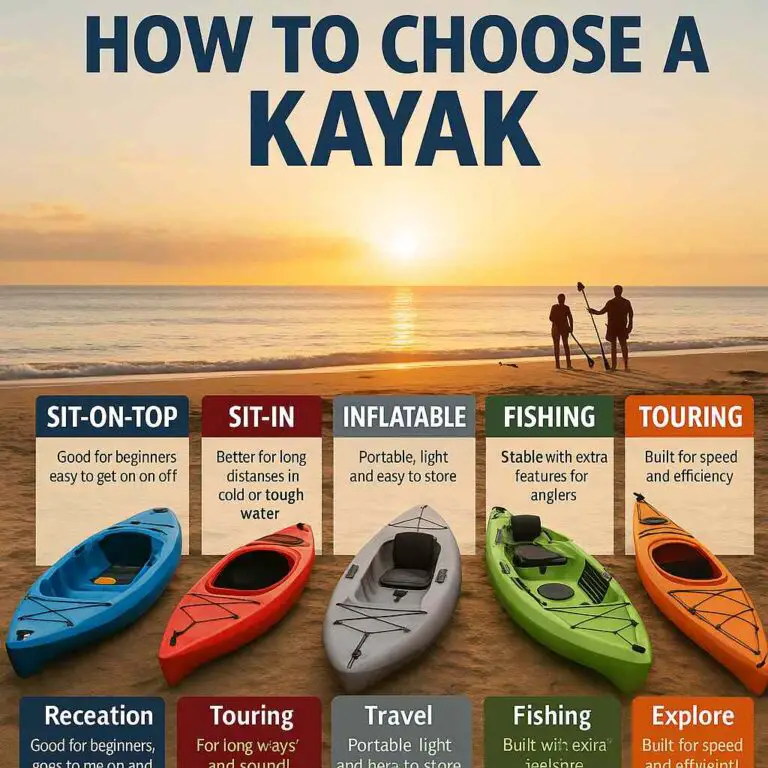Kayaking is an exhilarating water sport that allows outdoor enthusiasts to immerse themselves in the beauty of nature while navigating various water bodies. Traditional kayaks are known for their sleek and rigid designs, enabling experienced paddlers to perform advanced maneuvers like rolling. However, when it comes to inflatable kayaks, many people wonder if they can achieve the same level of control and capability, especially in terms of rolling.
Rolling an inflatable kayak is challenging due to its inherent buoyancy and flexibility. While it is not impossible, it requires advanced skills, suitable kayak modifications, and safety precautions. Most inflatable kayakers choose alternative techniques and enjoy the benefits of inflatable kayaks in other aspects of paddling, such as calm water exploration and white-water adventures.
Rolling an inflatable kayak is possible for skilled kayakers, but it’s not the primary focus or advantage of these versatile watercraft. Let’s explore whether rolling is a viable option for these watercraft and much more.
Understanding the Inflatable Kayak
Inflatable kayaks have come a long way in terms of design, materials, and performance. Modern inflatable kayaks are constructed from robust materials such as PVC and Hypalon, making them remarkably durable and resistant to punctures. These kayaks are available in a variety of styles, including sit-on-top, sit-inside, and tandem models, catering to a wide range of paddling preferences.
One of the primary advantages of inflatable kayaks is their portability. They can be easily deflated, folded, and stored in a compact bag, making them an excellent choice for adventurers who want to explore remote waterways or travel to different kayaking destinations. In addition to their portability, inflatable kayaks are also known for their stability, making them suitable for beginners and experienced paddlers alike.
Rolling in Traditional Kayaks
Before we delve into the possibility of rolling in inflatable kayaks, it’s essential to understand the concept of rolling itself. Rolling is a kayaking maneuver where a paddler deliberately capsizes their kayak and then uses a combination of body movements and paddle strokes to right themselves and resurface without exiting the kayak. This skill is commonly used in white-water kayaking and sea kayaking to recover from accidental capsizes.
Traditional kayaks, which are typically made of rigid materials like fiberglass or plastic, are well-suited for rolling. These kayaks have a low center of gravity and are designed to provide excellent control and stability in the water, making it easier for paddlers to execute rolls.
Challenges of Rolling an Inflatable Kayak
-
Buoyancy and Stability
The buoyant nature of inflatable kayaks makes them less prone to capsizing in the first place, which is a good thing for beginners or those who want a stable and forgiving paddling experience. However, this buoyancy can also work against paddlers when attempting to execute a roll. Rolling requires the kayak to be submerged and then brought back up, and the inherent buoyancy of an inflatable kayak can make it challenging to keep the kayak submerged during the roll.
-
Flexibility and Shape
Inflatable kayaks are designed to be flexible and inflatable, which means they can bend and conform to the water’s surface. While this flexibility is an advantage in many situations, it can make it harder to maintain the precise body positioning required for a successful roll. Traditional hard-shell kayaks have a fixed shape that aids in maintaining the right orientation during a roll.
-
Limited Space for Movement
Inflatable kayaks often have limited space inside the cockpit, making it challenging for paddlers to move their bodies and the paddle as freely as needed during a roll. Traditional kayaks offer more space, allowing paddlers to execute rolls with greater ease.
-
Paddle Considerations
The choice of paddle can also impact the feasibility of rolling in an inflatable kayak. Some inflatable kayaks come with shorter paddles, which may not provide the leverage and control required for a successful roll. Paddlers may need to invest in a longer and sturdier paddle for better results.
Is Rolling an Inflatable Kayak Possible?
While rolling an inflatable kayak presents unique challenges, it is not entirely impossible. Some experienced kayakers have successfully executed rolls in inflatable kayaks, albeit with some modifications to their technique and equipment. Here are some considerations for those interested in attempting to roll an inflatable kayak:
-
Practice and Skill
Rolling an inflatable kayak requires a high level of skill and practice. Paddlers should have a solid foundation in rolling techniques with traditional hard-shell kayaks before attempting it in an inflatable kayak.
-
Suitable Inflatable Kayak
Not all inflatable kayaks are created equal, and some may be more suitable for rolling than others. Look for inflatable kayaks designed with features that enhance stability and control, such as multiple air chambers, rigid drop-stitch floors, and reinforced seams.
-
Kayak Modifications
Some paddlers have successfully rolled inflatable kayaks after making modifications to improve their performance. This may include adding ballast weights to the kayak’s hull to help keep it submerged during the roll or reinforcing the cockpit area for better body positioning.
-
Longer Paddle
Invest in a longer and sturdier paddle that provides better leverage and control during the roll. A paddle with a larger blade surface can also help with the necessary strokes.
-
Expert Guidance
Consider seeking guidance from experienced kayakers or instructors who have experience with rolling inflatable kayaks. They can offer valuable tips, techniques, and safety precautions.
Alternatives to Rolling in Inflatable Kayaks
While rolling in an inflatable kayak is a challenging feat, it’s not the only way to enjoy paddling in these versatile watercraft. Inflatable kayaks offer a wide range of other benefits and exciting experiences, even if rolling proves elusive. Here are some alternatives to consider:
-
Paddle Skills
Focus on improving your overall paddling skills, including proper strokes, maneuvering, and handling different water conditions. Strong paddling skills will enhance your kayaking experience and safety.
-
White-Water and Sea Kayaking
Inflatable kayaks are excellent for white-water and sea kayaking, where rolling is less common and other techniques, such as bracing and edging, are essential for stability and control.
-
Enjoying Scenic Paddles
Inflatable kayaks are perfect for exploring calm lakes, slow-moving rivers, and serene coastal areas. You can enjoy leisurely paddles and take in the beauty of nature without the need for advanced maneuvers.
-
Fishing and Relaxation
Many inflatable kayaks are designed with specific features for fishing, such as rod holders and ample storage space. They also provide a comfortable platform for relaxation on the water.
-
Transportation and Travel
Inflatable kayaks are ideal for travelers who want to bring their kayaks to various destinations. They can be easily packed, checked as luggage, and inflated at your chosen paddling location.
Safety Precautions for Rolling in Inflatable Kayaks
If you decide to attempt rolling in an inflatable kayak, safety should be your top priority. Here are some essential safety precautions to keep in mind:
- Always Wear a Personal Flotation Device (PFD): Regardless of your skill level or the type of kayak you’re using, wearing a PFD is essential for your safety on the water.
- Choose a Safe Location: Practice rolling in calm and controlled water environments, such as a calm lake or a designated practice area. Avoid dangerous or swift-flowing waters.
- Have a Kayaking Partner: It’s safer to practice rolling with a kayaking partner who can assist you in case of any difficulties.
- Use a Safety Line: Attach a safety line to your kayak and secure it to your waist or PFD. This line will help you quickly release from the kayak if needed.
- Practice Self-Rescue Techniques: Be proficient in self-rescue techniques, such as the paddle float rescue, in case your roll attempts are unsuccessful.
Conclusion
Inflatable kayaks offer a convenient and accessible way for outdoor enthusiasts to enjoy kayaking in a variety of environments. While rolling in an inflatable kayak is challenging due to its buoyancy and flexibility, it is not impossible for experienced kayakers. With the right skills, suitable kayak modifications, and safety precautions, some paddlers have successfully executed rolls in inflatable kayaks.
However, it’s essential to remember that rolling is just one aspect of kayaking, and inflatable kayaks offer numerous other advantages and exciting experiences. Whether you’re exploring calm lakes, leisurely paddling along serene rivers, or embarking on adventurous white-water trips, inflatable kayaks can provide a wide range of enjoyable and fulfilling experiences on the water.
Ultimately, the decision to attempt rolling in an inflatable kayak should be made with a strong understanding of the challenges involved and a commitment to safety.




